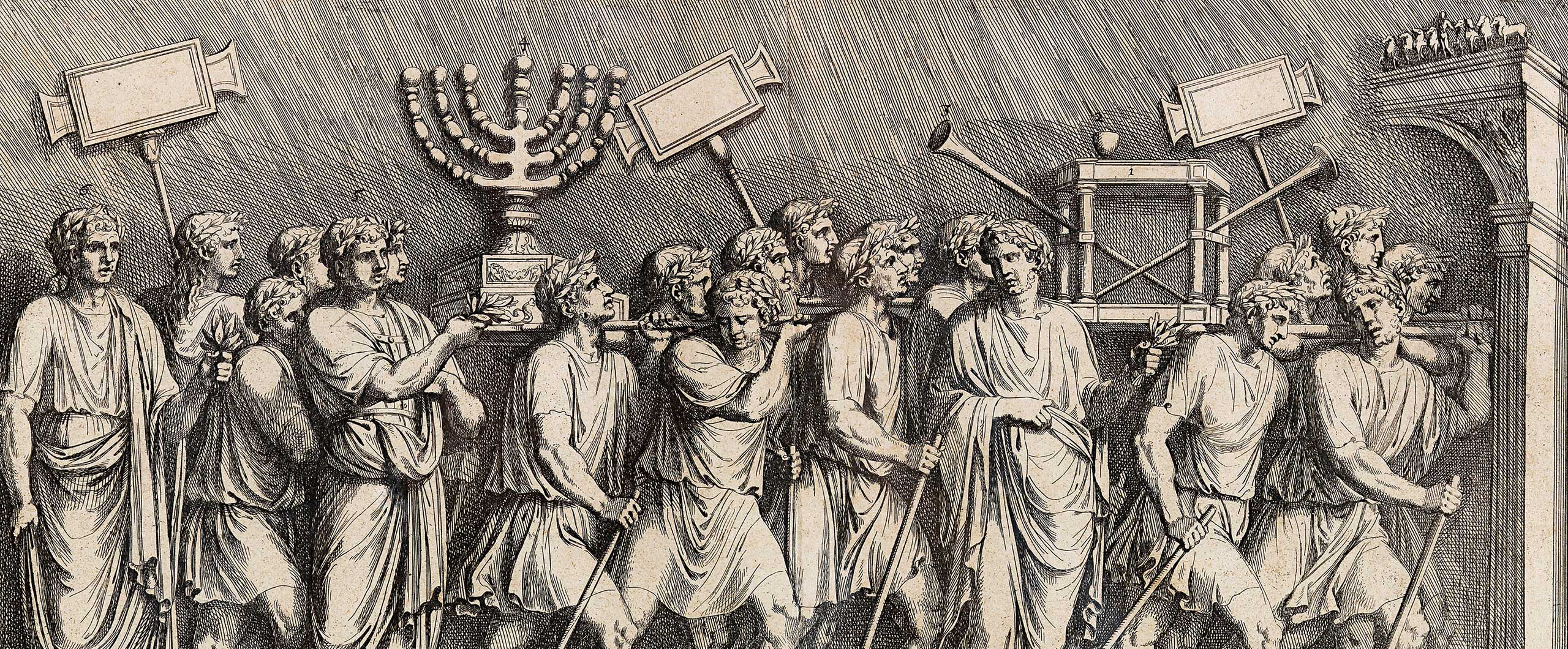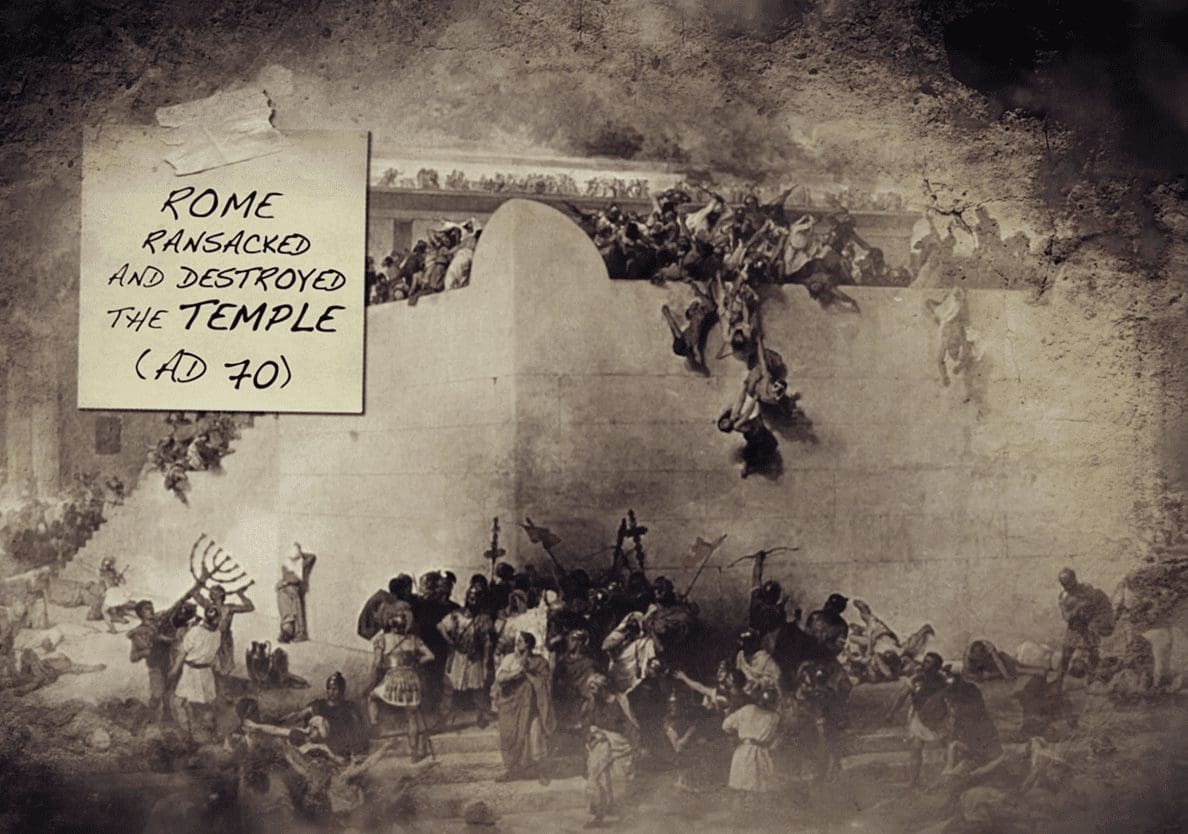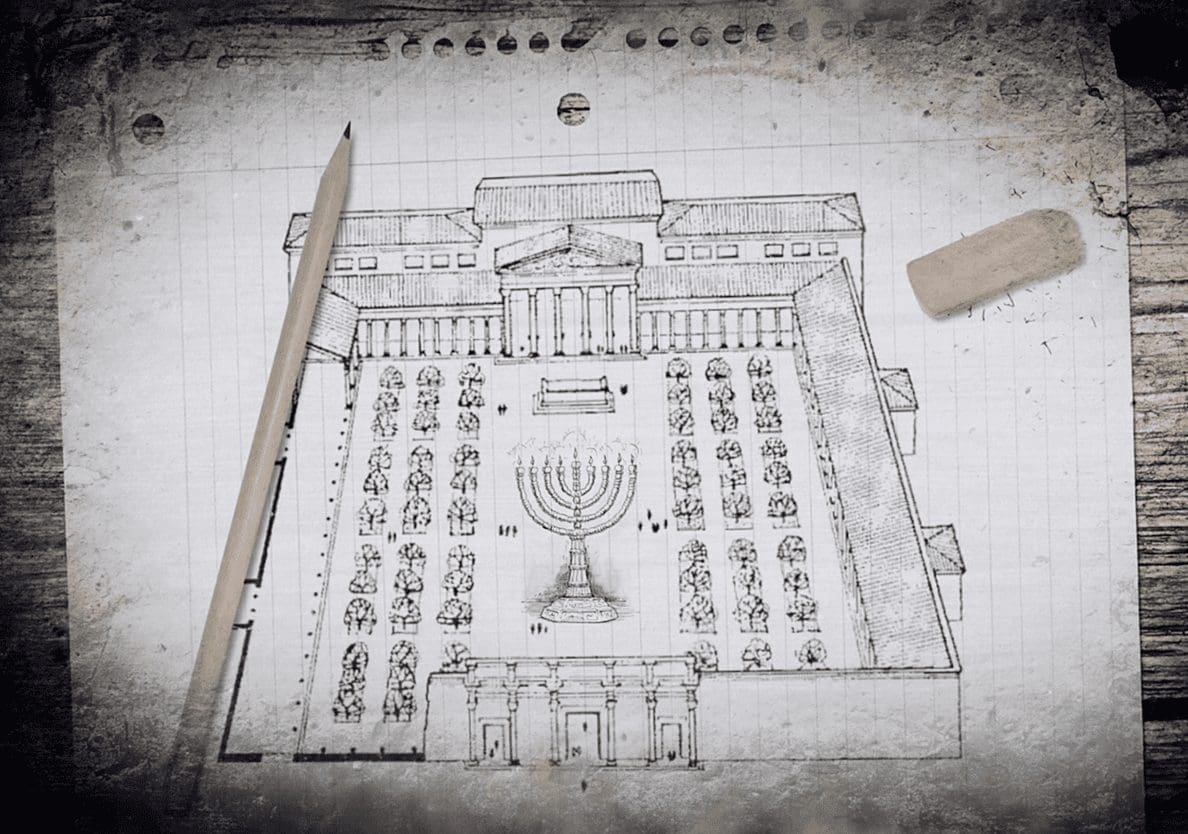The Menorah has been a symbol of Judaism for thousands of years. This multi-branched lampstand has its origins with Moses who received instructions for its construction and placement in the Tent Tabernacle during the wilderness wanderings (Exodus 25). Later King Solomon is said to have made ten lampstands for his Temple in Jerusalem, which also may have housed Moses’ original Menorah (see 1 Kings 8:4).
“Perhaps, this is the beginning of a popular belief today that as inheritors of Rome, the Vatican is hiding at least the Temple Menorah.”
The original seven-branched Menorah as well as the other lampstands are believed to have survived, more or less, to the time period of the Babylonian destruction of the Temple (586BC); or because the treasures are said to have returned to Jerusalem with the exiles under Ezra and Nehemiah, the lamp stands may have survived in Jerusalem until the time of Antiochus IV Epiphanes who raided the Temple and set up an altar to Zeus inside of it (167 BC). This infamous act inspired the Maccabean revolt, which ultimately restored the use of the Temple and saved looted objects from the desecrating Greek. Whether a new Menorah was constructed at this time is a matter of debate.

Titus looting the Temple (Arch of Titus, AD 81)
Regardless, the Temple was finally destroyed by Rome in AD 70. This destruction and the victory parade in it’s honour is still remembered today by the Arch of Titus, and the records of the Jewish Roman historian Josephus who witnessed both the parade in Rome and the actual destruction of the Jerusalem Temple. He records that on top of straight spoils of war, a Jewish priest (Phineas) bought his life by trading Temple treasures to the Romans, among which were two lampstands, tables, bowls, platters, veils and the high priests uniform (complete with Urim and Thummim).
After the victory parade in Rome, the Temple treasures that included a copy of the Jewish Law were displayed in the Roman Temple of Peace, a monument to Rome’s power housing artifacts from conquered peoples that now made up the Empire. To bolster Josephus’ claims there are 2nd century eyewitness claims of seeing in Rome the veil of the Ark of the Covenant, the high priest’s breastplate and the Temple Menorah.


After this the historical trail goes largely cold, but by the byzantine period it became a Jewish claim that Temple treasures were somewhere hidden in Rome, and by the medieval period legends grew to specify that Christians had hidden the treasures. Perhaps, this is the beginning of a popular belief today that as inheritors of Rome, the Vatican is hiding at least the Temple Menorah.
History however, is not entirely silent on this issue. Despite the Temple of Peace being destroyed by fire in AD 192, the Byzantine historian Procopius of Caesarea (AD 500-560) writes of two potential places that the Menorah could have ended up.
Procopius mentions when the Visigoths sacked Rome in AD 410 that they took the treasures of Solomon King of the Hebrews. That he doesn’t mean all of these treasures is verified by his account of Emperor Justinians’ general sacking Carthage (AD 482-565). Another people group, the Vandals, had sacked Rome in AD 455, Justinian’s general then defeated Carthage in AD 534 and is said to have brought back with him the Temple treasures that Titus had brought back to Rome after the destruction of Jerusalem.
Procopius also records what may be simply a legend, that a Jew told the Emperor the Temple treasures were cursed so he sent them back to Jerusalem. Interestingly, Justinian did build a massive church in Jerusalem after the taking of Carthage. He built the famed Nea Church in Jerusalem. Could this have been a place to house the long-lost Treasures of the Second Temple.

Corie Bobechko is a daily co-host, speaker, and writer of Bible Discovery. She also hosts a YouTube channel that shows how history and archaeology prove the Bible. Her heart for seekers and skeptics has led her to seek truth and share it with others. Corie also has a Bachelor of Theology from Canada Christian College.
https://www.baslibrary.org/biblical-archaeology-review/43/5/4
[2] Steven Fine, The Temple Menorah—Where Is It?
https://www.baslibrary.org/biblical-archaeology-review/31/4/2







Very cool!